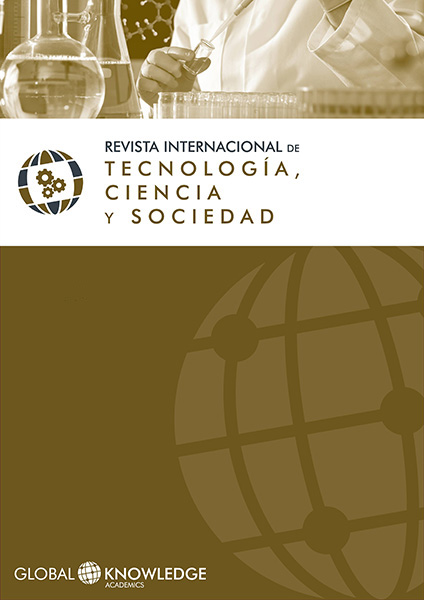Deficiency and the access to information: a reflection through communication and information paradigms
DOI:
https://doi.org/10.37467/gka-revtechno.v8.2051Keywords:
Information Society, Technological Revolution, Complexity, Accessibility, TransdisciplinaryAbstract
New paradigms and new realities emerge in the human society in current days, characterizing a society that questions its segregation culture, glimpsing new paths towards social inclusion of people with cerebral palsy. This scenario encourages scientific research, contributing to the evolution of available technological resources for accessibility. The significance of Communication and Information Technologies can be observed in a context in which, not just information shows a prominent role, but the ways to access it. The main goal of this article is to discuss, in the light of Technological and Complexity Paradigms, about the access to information by people with cerebral palsy, through Information and Communication Technologies. These technological resources are considered as Assistive Technology, once they promote accessibility for people with cerebral palsy by using user interfaces, which are especially relevant for the proposal reflection in this document.
References
Aota. (2015). Estrutura da prática da terapia ocupacional: domínio e processo - 3a edição. Tradução: Alessandra Cavalcanti, Fabiana Caetano Martins Silva e Dutra, Valéria Meirelles Carril Elui. Revista de Terapia Ocupacional Da Universidade de São Paulo, 26, 1–49. https://doi.org/10.11606/issn.2238-6149.v26iespp1-49
Assmann, H. (2000). A metamorfose do aprender na sociedade da informação. Ciência Da Informação, 29(2), 07-15. https://doi.org/10.1590/S0100-19652000000200002
Bersch, R. (2017). TECNOLOGIA ASSISTIVA. Porto Alegre. Retrieved from http://www.assistiva.com.br/Introducao_Tecnologia_Assistiva.pdf
Brasil. (2014). Acessibilidade Brasil. Retrieved from http://www.acessibilidadebrasil.org.br/joomla/o-que-e-acessibilidade
Canabarro, A., & Ramos, E. J. (2003). Internet e democratização do conhecimento: repensando o processo de exclusão social 1. Revista Novas Tecnologias Na Educação, 1(1), 1–7.
Castells, M. (2005). A sociedade em rede. (R. Venancio Majer & K. B. Gerhardt, Eds.), A Sociedade em Rede (8o edição). São Paulo: Paz e Terra.
Castells, M., Fernandez-Ardevol, M., Qiu, J. L., & Sey, A. (2007). The Mobile Communication Society: A cross-cultural analysis of available evidence on the social uses of wireless communication technology. Annenberg Research Network on International Communication. Los Angeles. Retrieved from http://citeseerx.ist.psu.edu/viewdoc/download?doi=10.1.1.109.3872&rep=rep1&type=pdf
Cavalcanti, A., & Galvão, C. C. (2007). Terapia Ocupacional: Fundamentação e prática (1st ed.). Rio de Janeiro: Guanabara Koogan.
Comitê de Ajudas Técnicas. (2007). Ata Vii. Comitê de Ajudas Técnicas, 18. Retrieved from http://portal.sdh.gov.br/clientes/sedh/sedh/conselho/conade/conselhos_estaduais_municipais/como_criar/prin?searchterm=corde+++ATA+VII%5Cnhttp://www.infoesp.net/CAT_Reuniao_VII.pdf
Crochik. J. L. (1997). Preconceito, indivíduo e cultura. São Paulo: Robe Editorial.
Damasceno, L. L., & Galvão Filho, T. A. (2002). As Novas Tecnologias Como Tecnologia Assistiva: Utilizando Os Recursos De Acessibilidade Na Educação Especial. Congreso Iberoamericano de Informática Educativa Especial (III), 1–11. Retrieved from http://saci.org.br/pub/congres/CIIEE2002/Arquivos/Demonstra??es.pdf
Howell, M. J., Herrera, N. S., Moore, A. G., & McMahan, R. P. (2016). A reproducible olfactory display for exploring olfaction in immersive media experiences. Multimedia Tools and Applications, 75(20), 12311–12330. https://doi.org/10.1007/s11042-015-2971-0
Ishii, H., Lakatos, D., Bonanni, L., & Labrune, J.-B. J. (2012). Radical Atoms : Beyond Tangible Bits , Toward Transformable Materials. Interactions, XIX(February), 38–51. https://doi.org/10.1145/2065327.2065337
Kabali, H. K., Irigoyen, M. M., Nunez-davis, R., Budacki, J. G., & Mohanty, S. H. (2015). Exposure and Use of Mobile Media Devices by Young Children. Pediatrics, 136(6). https://doi.org/10.1542/peds.2015-2151
Leggett, S. (2017). Childwise Trends and Predictions. Retrieved from http://www.childwise.co.uk/uploads/3/1/6/5/31656353/childwise_press_release_-_monitor_2017.pdf
McLuhan, M. (2000). Os Meios de Comunicação Como Extensões do Homem. (Pensamento Cultrix, Ed.) (1st ed.). São Paulo: Cultrix.
Morin, E. (2011). Introdução ao Pensamento Complexo. (Sulina, Ed.) (4th ed.). Porto Alegre: Meridional LTDA.
Nielsen, J. (1995). Towards Accessible Human-computer Interaction. In J. Nielsen (Ed.), Advances in Human-computer Interaction (5o edition). New York: Ablex Publishing Corporation.
Oliveira, E., Sousa, G., Magalhães, I., & Tavares, T. (2015). The Use of Multisensory User Interfaces for Games Centered in People with Cerebral Palsy. Universal Access in Human-Computer Interaction. Access to Learning, Health and Well-Being, Part III(LNCS 9177), 514–524. https://doi.org/10.1007/978-3-319-20684-4_50
ONU. (2014). Convenção da ONU sobre os Direitos das Pessoas com Deficiência. Retrieved from http://www.acessibilidadebrasil.org.br/joomla/destaques-acessibilidade/124-convencao-da-onu-sobre-os-direitos-das-pessoas-com-deficiencia
Otsuki, M., Kawano, T., Maruyama, K., Kuzuoka, H., & Suzuki, Y. (2016). Representing Gaze Direction in Video Communication Using Eye-Shaped Display. Proceedings of the 29th Annual Symposium on User Interface Software and Technology - UIST ’16 Adjunct, 65–67. https://doi.org/10.1145/2984751.2985705
Pike, M., Ramchurn, R., Benford, S., & Wilson, M. L. (2016). #Scanners: Exploring the Control of Adaptive Films Using Brain-Computer Interaction. Chi ’16, 5385–5396. https://doi.org/10.1145/2858036.2858276
Rahman, M. I., Chowdhury, B. U., Hossen, R., & Ahmmed, K. T. (2015). Multi-channel signal detection and selection with android based voice controlled system using simulink. 2nd International Conference on Electrical Engineering and Information and Communication Technology, ICEEiCT 2015, (May), 21–23. https://doi.org/10.1109/ICEEICT.2015.7307517
Reid, D., & Campbell, K. (2006). The Use of Virtual Reality with Children with Cerebral Palsy : A Pilot Randomized Trial. Therapeutic Recreation Journal, 40(4), 255–268.
Reis, N. M. de M. (2004). Introdução à Tecnologia Assistiva. In Anais do III Seminário Internacional Sociedade Inclusiva Ações Inclusivas de Sucesso (pp. 2–6). Belo Horizonte: Sociedade Inclusiva PUC Minas.
Rodrigues, G. M., Simão, J. B., & Andrade, P. S. De. (2003). Sociedade da Informação no Brasil e em Portugal: um panorama dos Livros Verdes. Ciência Da Informação, 32, 89–102. https://doi.org/10.1590/S0100-19652003000300011
Schewinsky, S. R. (2004). A barbárie do preconceito contra o deficiente - todos somos vítimas. Acta Fisiátrica, 11(1), 7–11. Retrieved from http://www.revistas.usp.br/actafisiatrica/article/view/102465
Silva, L. (2006). O estranhamento causado pela deficiência: preconceito e experiência. Revista Brasileira de Educação, 11(33), 424–434. https://doi.org/10.1590/S1413-24782006000300004
Wang, S., Song, J., Lien, J., Poupyrev, I., & Hilliges, O. (2016). Interacting with Soli: Exploring Fine-Grained Dynamic Gesture Recognition in the Radio-Frequency Spectrum. Proceedings of the 29th Annual Symposium on User Interface Software and Technology - UIST ’16, 851–860. https://doi.org/10.1145/2984511.2984565
Downloads
Published
Issue
Section
License
All articles are published under an Attribution-NoDerivatives 4.0 International (CC BY-ND 4.0) license. Authors retain copyright over their work.

